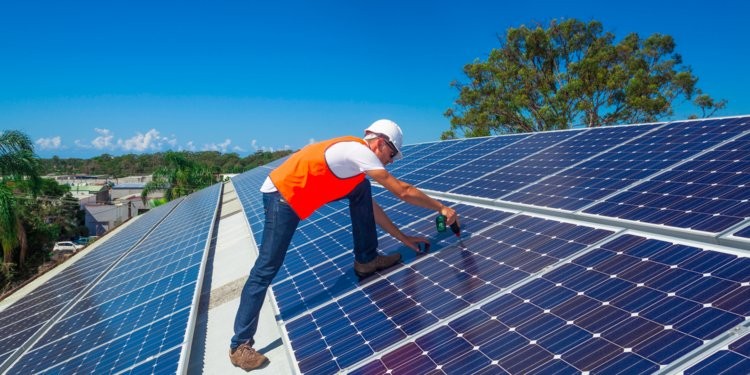
Wed, Jul 11, 2018 3:18 AM
Today's industrial society is a very real threat to the global environment from the uncontrolled consumption of conventional fuels creating greenhouse gas emissions.
Carbon dioxide emissions alone contributed to 84% of the potential global warming in 2000 in the UK [dti Jan 2004].
The UK has had a false sense of security since the discovery of the North Sea oil reserves in the 1960's, and we have used a readily available supply of home produced energy. This situation will not last much longer, and our reserves are in rapid decline. We face the probability of an energy crisis unless we act together as a nation to find and utilise new sources of energy that are non-polluting.
The imminent crisis is regularly reported upon, including the vulnerability of the UK as oil and gas reserves dry up and we are forced to rely on imports. Power cuts are predicted for the winter of 2004 and all subsequent years unless we have a fundamental shift in our attitude to energy use and resourcing.
Do we wait until the oil and gas runs out? Do we continue to pollute the earth and its environment, leaving a legacy of shortage and devastation for the next generations? or do we do something about it?
By re-assessing our usage, by advances in technology, and by using renewable energy sources, Solar, Wind, Thermal, Wave, we can do something about it.
We've used the Sun for drying clothes and food for thousands of years, but only recently have we been able to use it for generating power. The Sun is 150 million kilometres away, and amazingly powerful. Just the tiny fraction of the Sun's energy that hits the Earth (around a hundredth of a millionth of a percent) is enough to meet all our power needs many times over. In fact, every minute, enough energy arrives at the Earth to meet our demands for a whole year - if only we could harness it properly.
Currently in the UK there are grants available to help you install solar power in your home.
Why Solar?
While a majority of the world's current electricity supply is generated from fossil fuels such as coal, oil and natural gas, these traditional energy sources face a number of challenges including rising prices, security concerns over dependence on imports from a limited number of countries which have significant fossil fuel supplies, and growing environmental concerns over the climate change risks associated with power generation using fossil fuels. As a result of these and other challenges facing traditional energy sources, governments, businesses and consumers are increasingly supporting the development of alternative energy sources and new technologies for electricity generation. Renewable energy sources such as solar, biomass, geothermal, hydroelectric and wind power generation have emerged as potential alternatives which address some of these concerns. As opposed to fossil fuels, which draw on finite resources that may eventually become too expensive to retrieve, renewable energy sources are generally unlimited in availability.
Solar power generation has emerged as one of the most rapidly growing renewable sources of electricity. Solar power generation has several advantages over other forms of electricity generation:
Reduced Dependence on Fossil Fuels. Solar energy production does not require fossil fuels and is therefore less dependent on this limited and expensive natural resource. Although there is variability in the amount and timing of sunlight over the day, season and year, a properly sized and configured system can be designed to be highly reliable while providing long-term, fixed price electricity supply.
Environmental Advantages. Solar power production generates electricity with a limited impact on the environment as compared to other forms of electricity production.
Matching Peak Time Output with Peak Time Demand. Solar energy can effectively supplement electricity supply from an electricity transmission grid, such as when electricity demand peaks in the summer
Modularity and Scalability. As the size and generating capacity of a solar system are a function of the number of solar modules installed, applications of solar technology are readily scalable and versatile.
Flexible Locations. Solar power production facilities can be installed at the customer site which reduces required investments in production and transportation infrastructure.
Government Incentives. A growing number of countries have established incentive programs for the development of solar and other renewable energy sources, such as (i) net metering laws that allow on-grid end users to sell electricity back to the grid at retail prices, (ii) direct subsidies to end users to offset costs of photovoltaic equipment and installation charges, (iii) low interest loans for financing solar power systems and tax incentives; and (iv) government standards that mandate minimum usage levels of renewable energy sources. Despite the cost, an advantage of photovoltaic systems is that they can be used in remote areas. Anywhere a diesel generator is the technology of choice, many times a photovoltaic system is a much better life-cycle cost option. Stand-alone photovoltaic systems produce power independently of the utility grid. In some off-the-grid locations even one half kilometer from power lines, stand-alone photovoltaic systems can be more cost-effective than extending power lines. They are especially appropriate for remote, environmentally sensitive areas, such as national parks, cabins, and remote homes.
The solar power market has grown significantly in the past decade. According to Solarbuzz, the global solar power market, as measured by annual solar power system installations, increased from 427 MW in 2002 to 1,744 MW in 2006, representing a CAGR of 42.2%, while solar power industry revenues grew to approximately US$10.6 billion in 2006. Despite the rapid growth, solar energy constitutes only a small fraction of the world's energy output and therefore may have significant growth potential. Solarbuzz projects in one of its forecasts that annual solar power industry revenue could reach US$31.5 billion by 2011.
Think Energy Saving - Think Solar





